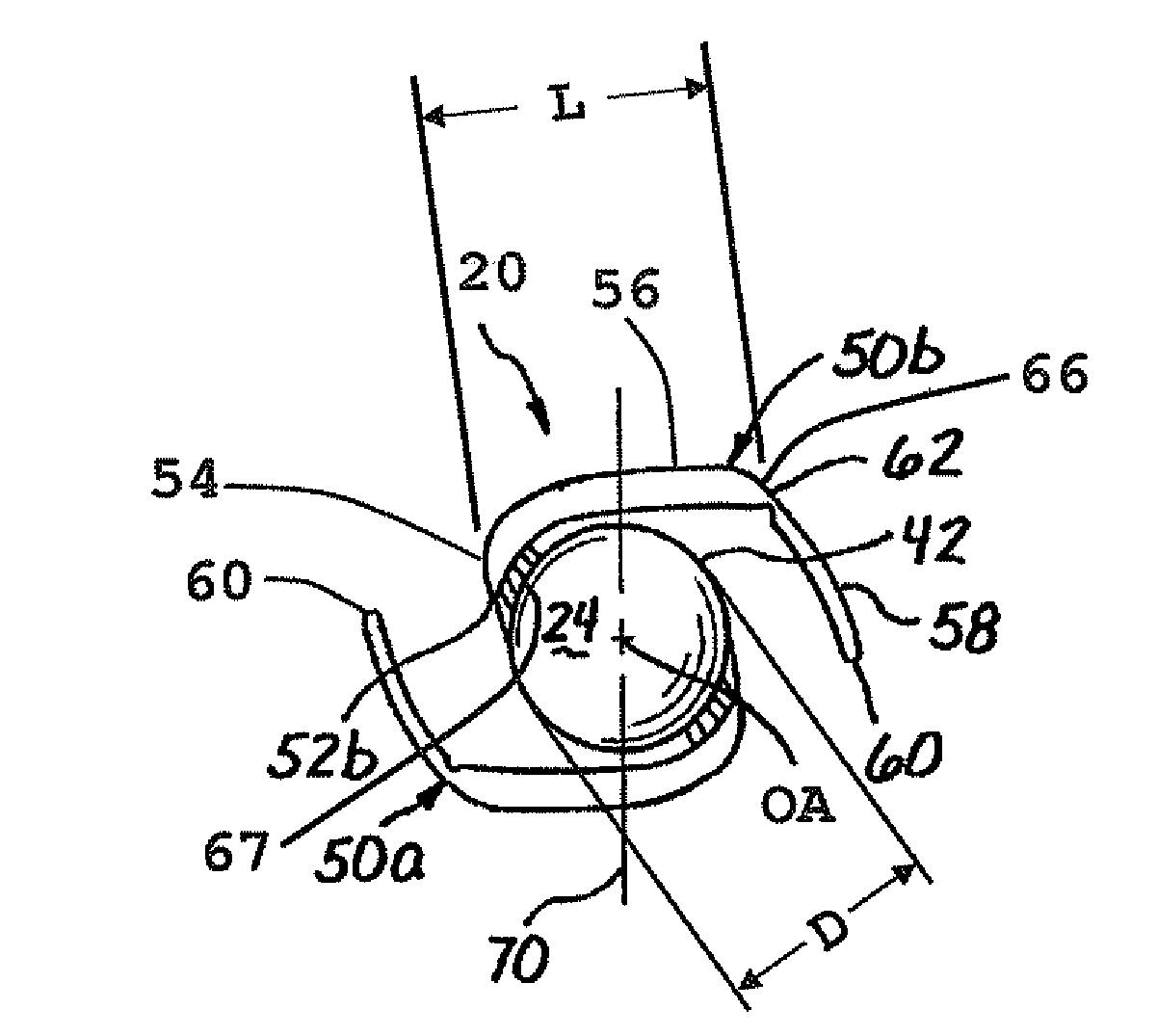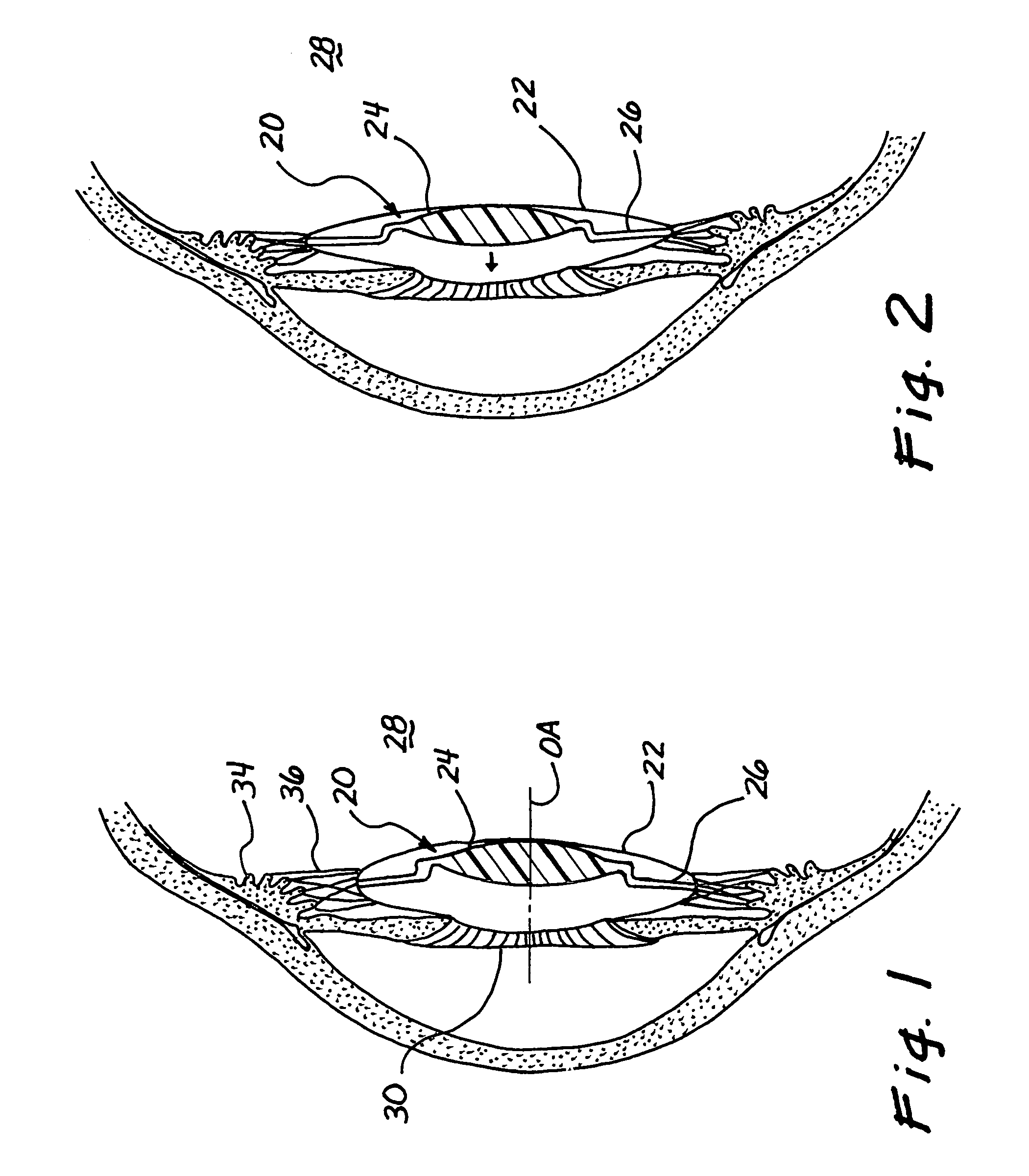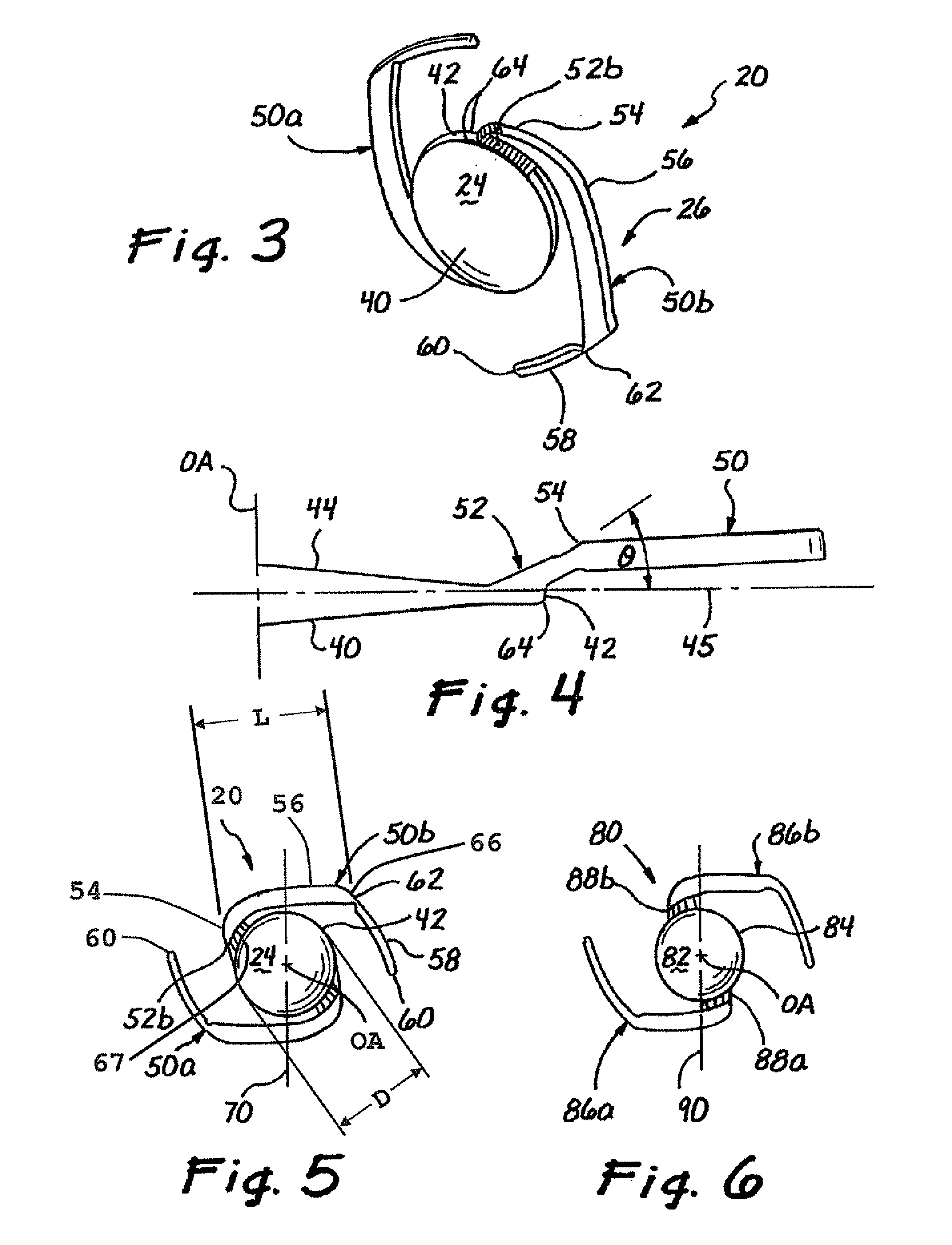Accommodating intraocular lens with elongated suspension structure
a suspension structure and intraocular lens technology, applied in intraocular lenses, prostheses, medical science, etc., can solve the problems of limited accommodation ability of conventional iols, partial or complete blindness, and numerous disorders of the human eye, so as to enhance the accommodation of an optic and enhance the effect of accommodation
- Summary
- Abstract
- Description
- Claims
- Application Information
AI Technical Summary
Benefits of technology
Problems solved by technology
Method used
Image
Examples
Embodiment Construction
[0029]Referring to the drawings in more detail, an intraocular lens (IOL) 20 according to an exemplary embodiment of the present invention is illustrated in FIGS. 1 and 2 after implantation in the capsular bag 22 of an eye. Exemplary IOL 20 includes an optic 24 and a movement assembly 26 coupled thereto. The optic 24, which has an optical axis OA, is adapted to focus light onto a retina of an eye. The movement assembly 26 of exemplary IOL 20 cooperates with the eye to effect accommodating movement of the optic 24 and, in particular, converts radial movement (i.e., movement perpendicular to the optical axis OA) of the capsular bag of an eye to axial movement (i.e., movement parallel to the optical axis OA) of the optic 24. In the exemplary embodiment, the movement assembly 26 biases the optic 24 in a posterior direction (to the right) against the posterior wall of the capsular bag 22.
[0030]A brief description of the anatomy of the eye is appropriate in order to understand the inventi...
PUM
 Login to View More
Login to View More Abstract
Description
Claims
Application Information
 Login to View More
Login to View More - R&D
- Intellectual Property
- Life Sciences
- Materials
- Tech Scout
- Unparalleled Data Quality
- Higher Quality Content
- 60% Fewer Hallucinations
Browse by: Latest US Patents, China's latest patents, Technical Efficacy Thesaurus, Application Domain, Technology Topic, Popular Technical Reports.
© 2025 PatSnap. All rights reserved.Legal|Privacy policy|Modern Slavery Act Transparency Statement|Sitemap|About US| Contact US: help@patsnap.com



